To the workers and staff who were involved in the construction of the 12.9km-long Hsuehshan Tunnel, June 16, 2006 -- the day the tunnel opened -- is probably a day they will never forget.
On that day, they proved to themselves, the nation and the world that, after 15 years of work -- and a series of disasters that at one point almost halted the project -- they had accomplished an impossible mission. It was also a day that marked the official opening of the Chiang Wei-shui Freeway, which facilitates travel between Taipei and Ilan counties.
While media coverage over the past few days has focused on the eagerness of motorists nationwide to be among the first through the tunnel, those involved in building it reminded the public how the project began, and most importantly, the hardships workers experienced in completing the challenging task.
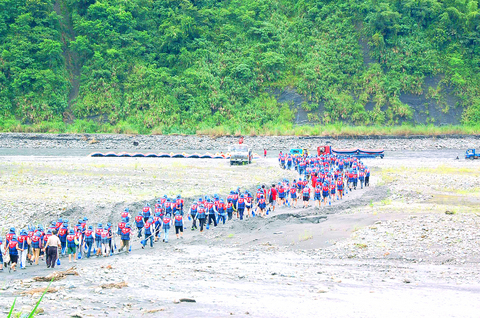
PHOTO: CHIU HSIEN-MING, TAIPEI TIMES
The project, which lasted through seven premiers and 10 transportation ministers, began with a vision.
During the 15 years it took to drill 12.9km through a mountain, the ground collapsed 98 times, underground water inundated the tunnel 36 times, tunnel boring machines were trapped inside 26 times and 25 workers lost their lives.
In the late 1980s, the Ministry of Transportation and Communications had already planned the Nangang-Pinglin section of the Taipei-Ilan Expressway, and officials proposed several options to connect Pinglin in Taipei County and the Ilan County.
Ou Chin-der (
Boring machines
Construction began in 1991, and tunnel-boring machines were purchased -- under the advisement of overseas experts -- to start drilling through the mountain.
But this decision led to a series of disasters.
The main reason, engineers recalled, was the failure to detect a massive aquitard -- a pocket of water captured in impermeable rock -- that had formed inside a sandstone layer millions of years ago.
When the machines hit the layer, water burst out and flooded the tunnel.
Winson Chang (
Now in his early forties, Chang said the real frustration began when one of the boring machines got stuck in the pilot tunnel in 1993.
According to Chang, construction difficulties continued over the following four years.
The most unforgettable disaster was a ground collapse in 1997, which damaged approximately 100m of tunnel that was already built and caused landslides that moved 10,000m3 of rubble, and buried a boring machine. The manufacturer estimated that fixing the machine would cost twice as much as buying a new one and that repairing it would take an additional 38 months.
After that, RSEA Engineering Corp, the contractor recruited for the construction, decided to forfeit the tunnel boring machines and adopt a drilling and blasting method instead. The risks involved in doing so drove away many potential overseas contractors, who all failed to find insurance companies willing to cover the occupational hazards.
The withdrawal of overseas contractors shook the confidence of the ministry, and at one point it thought about abandoning the tunnel project completely.
An alternative was put on the table: straightening the existing Taipei-Ilan Highway which meanders through the mountains by constructing an overpass. That option could have become reality if it were not for the persistence of former bureau director Cheng Wen-long (鄭文隆), who persuaded the Minister of Transportations and Communications to continue the project.
New freeway
The completed tunnel has also brought into full operation the Chiang Wei-shui Freeway, which is expected to affect the development of the nation's northeastern region.
As the commuting time between Taipei and Ilan has now been cut to around 30 minutes, motorists can now bypass Pinglin. They can also choose not to take the longer scenic drive along the coastline highway. Media reports have shown that businesses along these routes have witnessed a significant reduction in customers over the past few days.
Huang Chi-liang (
"[The hotel industry] now ought to worry about how they are going to keep people here," Huang said, adding that tourists will expect more from travel service providers.
Huang said that the launch of the freeway would incorporate Ilan into the Taipei Metropolitan Area.
He added, however, that is was difficult to predict whether this would motivate more former Ilan residents to move back to their hometown.
Exploitation
Environmental protection groups have expressed concerns over the unrestricted exploitation of the land.
Lim Hak-yan (
This will devastate the environment to the point there is no way to redeem it, he said.
Lim also said that Taiwan cannot afford to build another highway.
Instead, the government should focus more on constructing public transportation systems, he said.
While most former Ilan County residents say they will enjoy the convenience the freeway brings, few expressed interest in returning and settling down for good.
Wu li-ming (
She said that while she was thrilled at the thought of arriving home in less than an hour, she was not particularly interested in moving back.
"A lot of young people have moved out of [Lotung] because there are not many jobs available," Wu said, "Ilan has beautiful scenery, but the salaries are too low to live on."
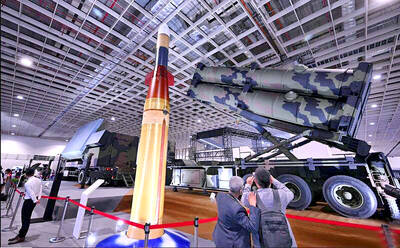
Taiwan is to commence mass production of the Tien Kung (天弓, “Sky Bow”) III, IV and V missiles by the second quarter of this year if the legislature approves the government’s NT$1.25 trillion (US$39.78 billion) special defense budget, an official said yesterday. Commenting on condition of anonymity, a defense official with knowledge of the matter said that the advanced systems are expected to provide crucial capabilities against ballistic and cruise missiles for the proposed “T-Dome,” an advanced, multi-layered air defense network. The Tien Kung III is an air defense missile with a maximum interception altitude of 35km. The Tien Kung IV and V
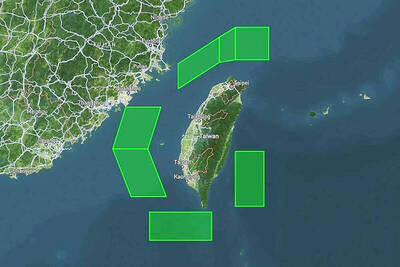
The disruption of 941 flights in and out of Taiwan due to China’s large-scale military exercises was no accident, but rather the result of a “quasi-blockade” used to simulate creating the air and sea routes needed for an amphibious landing, a military expert said. The disruptions occurred on Tuesday and lasted about 10 hours as China conducted live-fire drills in the Taiwan Strait. The Civil Aviation Administration (CAA) said the exercises affected 857 international flights and 84 domestic flights, affecting more than 100,000 travelers. Su Tzu-yun (蘇紫雲), a research fellow at the government-sponsored Institute for National Defense and Security Research, said the air
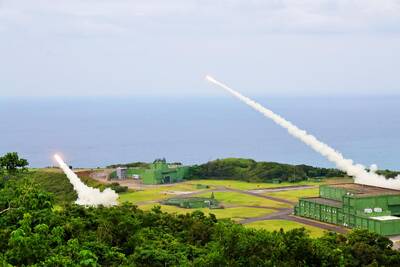
Taiwan lacks effective and cost-efficient armaments to intercept rockets, making the planned “T-Dome” interception system necessary, two experts said on Tuesday. The concerns were raised after China’s military fired two waves of rockets during live-fire drills around Taiwan on Tuesday, part of two-day exercises code-named “Justice Mission 2025.” The first wave involved 17 rockets launched at 9am from Pingtan in China’s Fujian Province, according to Lieutenant General Hsieh Jih-sheng (謝日升) of the Office of the Deputy Chief of the General Staff for Intelligence at the Ministry of National Defense. Those rockets landed 70 nautical miles (129.6km) northeast of Keelung without flying over Taiwan,
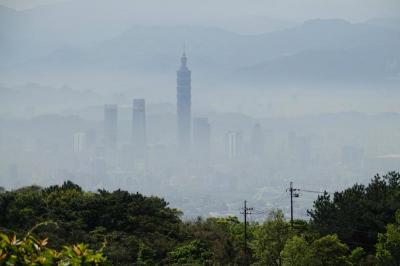
A strong continental cold air mass is to bring pollutants to Taiwan from tomorrow, the Ministry of Environment said today, as it issued an “orange” air quality alert for most of the country. All of Taiwan except for Hualien and Taitung counties is to be under an “orange” air quality alert tomorrow, indicating air quality that is unhealthy for sensitive groups. In China, areas from Shandong to Shanghai have been enveloped in haze since Saturday, the ministry said in a news release. Yesterday, hourly concentrations of PM2.5 in these areas ranged from 65 to 160 micrograms per cubic meter (mg/m³), and pollutants were